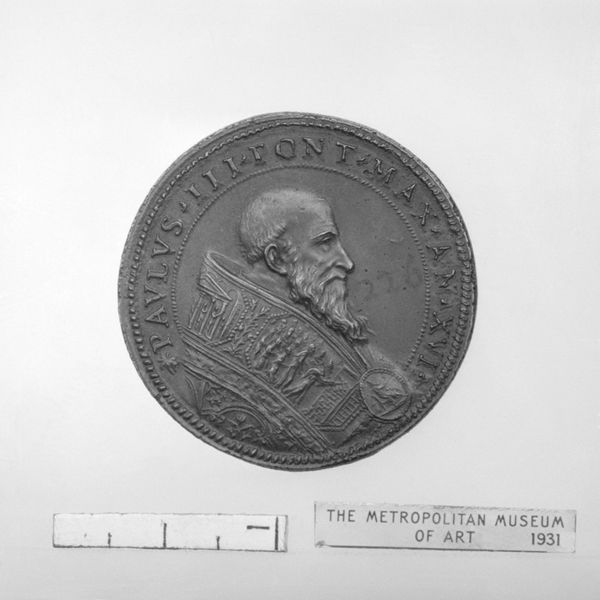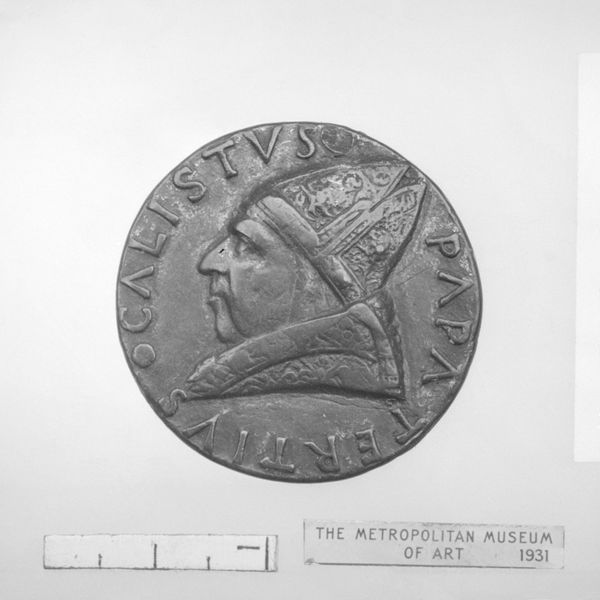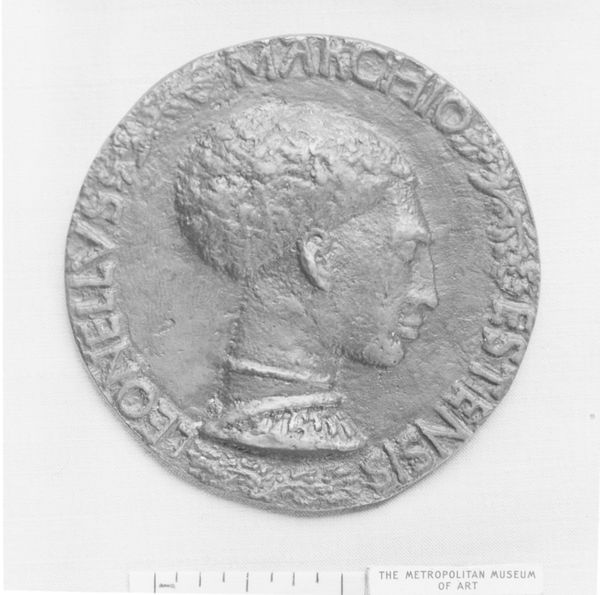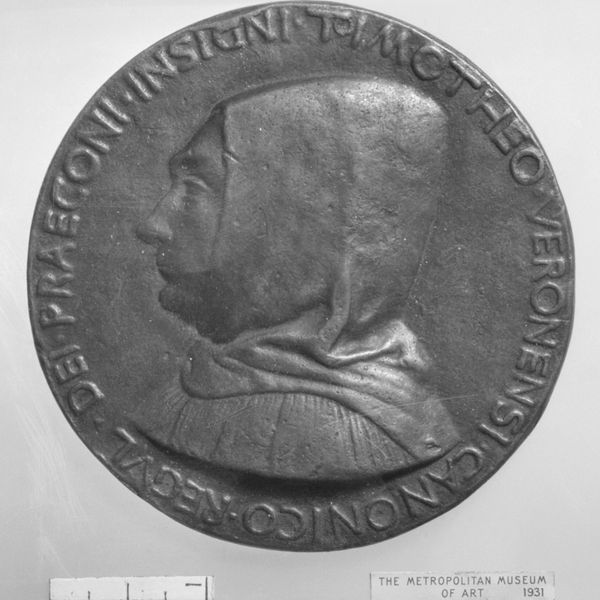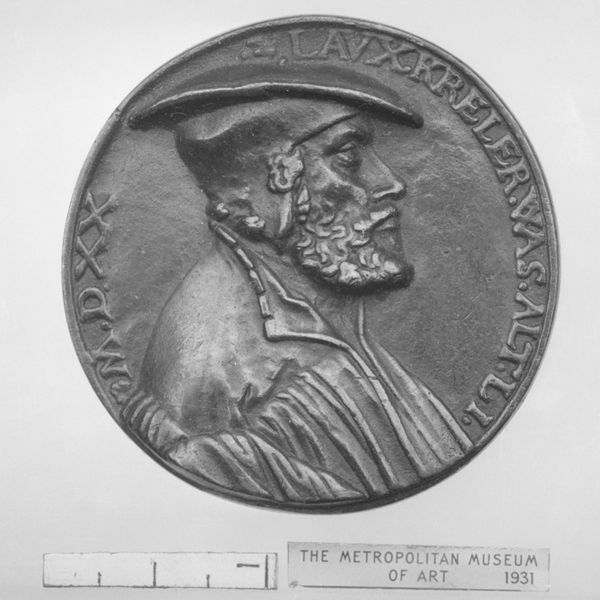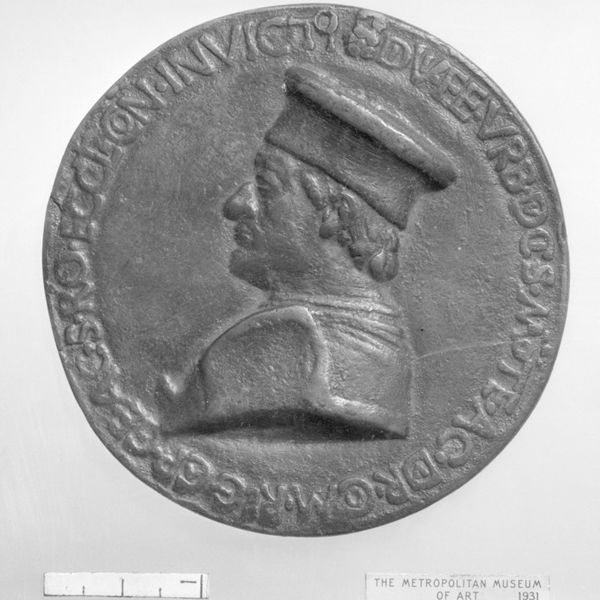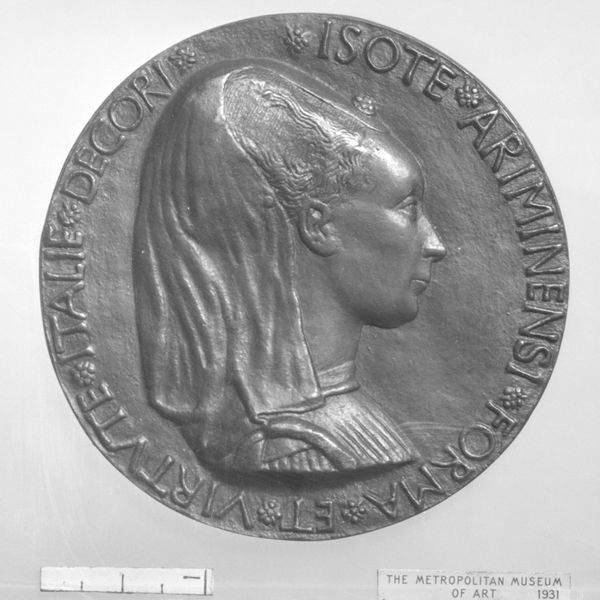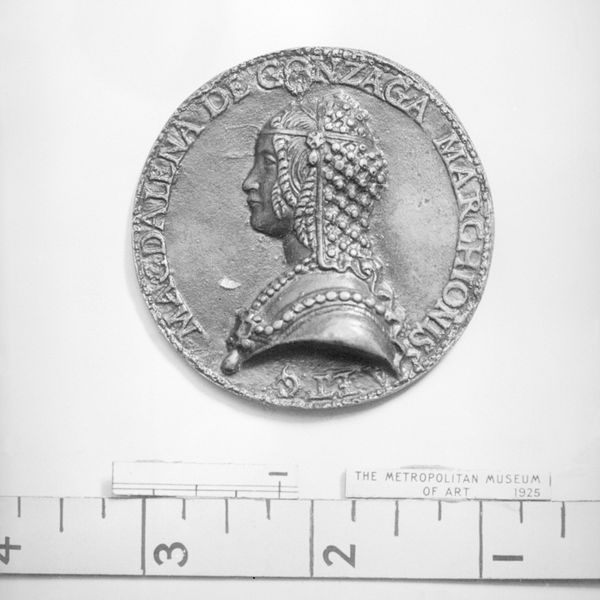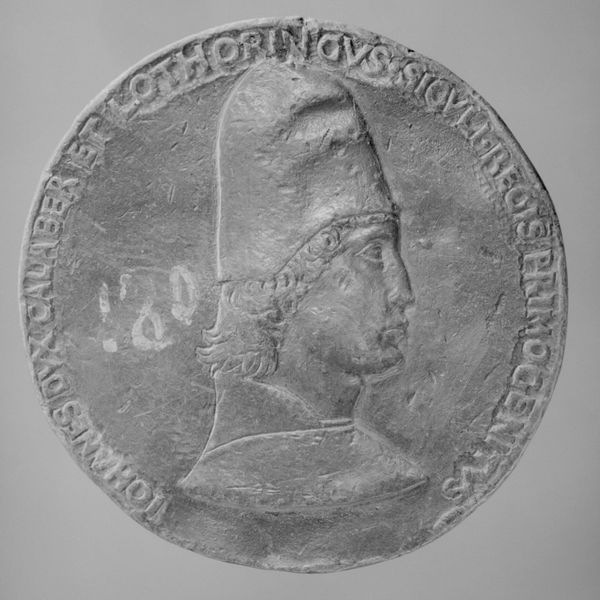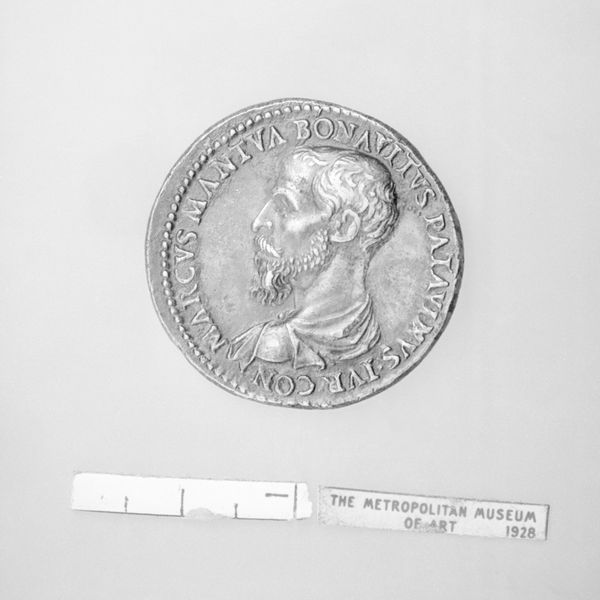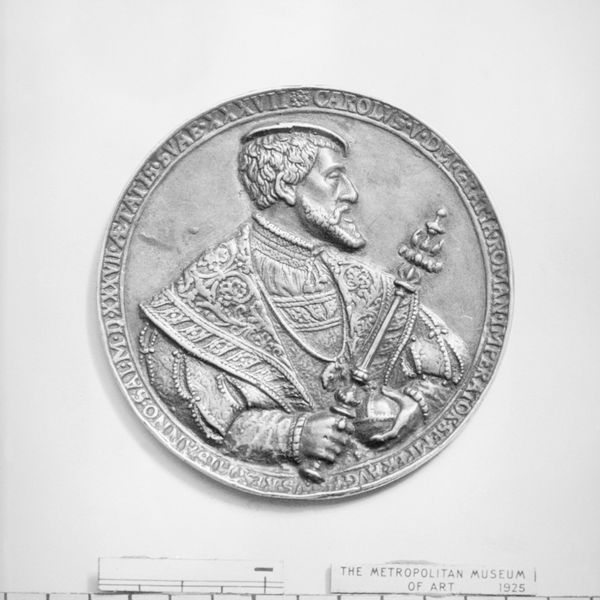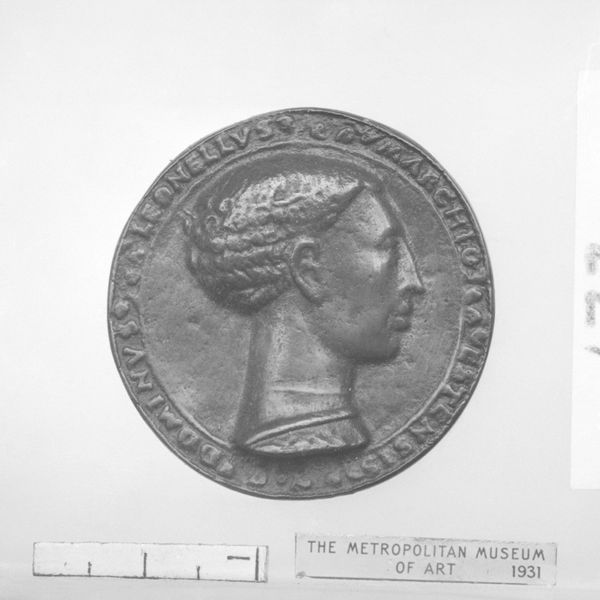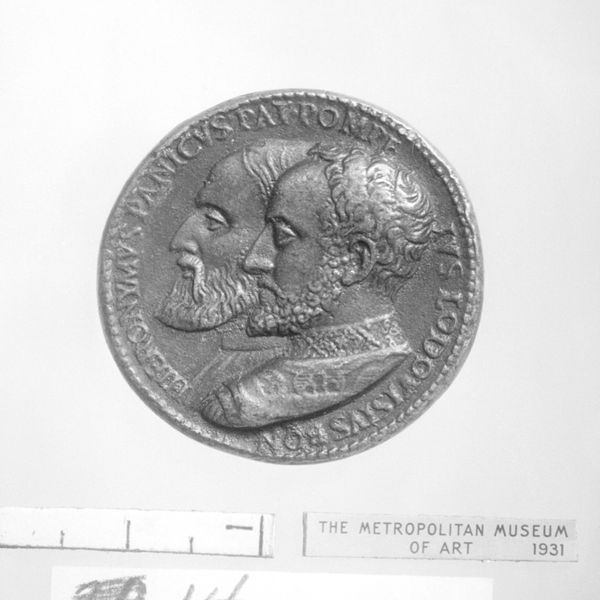
carving, metal, relief, sculpture
#
portrait
#
medal
#
carving
#
metal
#
relief
#
sculptural image
#
11_renaissance
#
sculpture
#
carved
#
decorative-art
#
charcoal
#
italian-renaissance
Dimensions: Diameter: 1 13/16 in. (46 mm)
Copyright: Public Domain
Curator: This is a metal relief carving dating from the early 16th century, circa 1504 to 1505. Gian Cristoforo Romano created this portrait of Pope Julius II. Editor: It’s austere. That cool, almost indifferent gaze gives it a powerful stillness despite its small scale. Curator: Medals such as this were common during the Italian Renaissance as objects of exchange. Think about the casting process: molten metal, the labor of the craftsman shaping the mold. They speak volumes about production of luxury and power in the Renaissance. Editor: Absolutely. Beyond the craftsmanship, this medal visually embodies Julius II’s persona as both a religious leader and a temporal ruler. The inscription around the portrait reinforces his authority; it is like carrying a miniature version of the Papal state. Curator: Consider the use of metal itself. A durable material to literally stamp and spread his image far beyond Rome! It also makes one think about patronage; Pope Julius was quite known to fund many artists in the 16th century. Editor: I see the symbolic implications reaching further. Metals in Renaissance iconography were often connected with power, strength, incorruptibility... fitting qualities to associate with a Pope who aimed to restore the papacy’s dominance. Even the form, the circle, has connotations of totality and the eternal. Curator: Yes! I wonder if, perhaps, future study may use analytical techniques to know the specific metal composition that would in turn inform where metal was being sourced, if locally or abroad and therefore reveal global market practices at the time. Editor: This work compresses so much information in a simple object! The visual authority projected through metal makes this piece fascinating beyond its historical significance. Curator: Indeed. It invites questions not just about the pontiff himself, but the vast networks of artistry and material culture that sustained his reign.
Comments
No comments
Be the first to comment and join the conversation on the ultimate creative platform.
